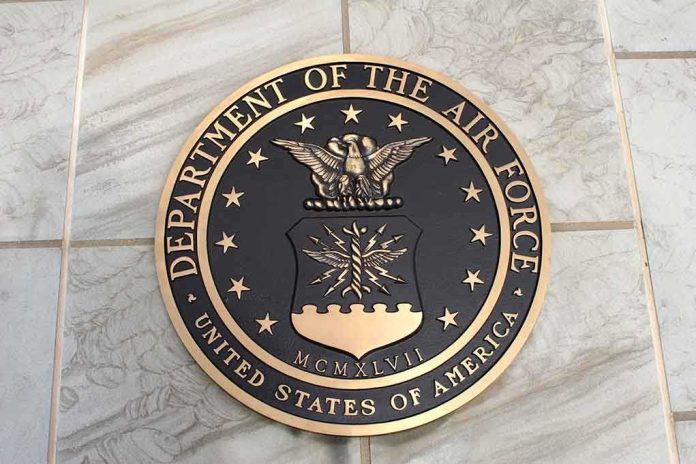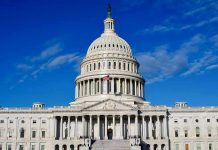
Marine One’s mid-air malfunction during President Trump’s UK state visit triggered a rapid security response, spotlighting the critical importance of redundancy and rigorous safety protocols for America’s commander-in-chief.
Story Snapshot
- President Trump’s Marine One helicopter diverted to Luton Airport due to a hydraulic issue; swift transfer ensured his safety.
- Incident underscores the necessity of multiple aircraft for presidential transport and rigorous operational redundancy.
- All scheduled events resumed with only a minor delay; no injuries or security breaches reported.
- Expert analysis confirms the effectiveness of established safety protocols and presidential contingency planning.
Incident Details: Hydraulic Fault Diverts Marine One During UK State Visit
President Donald Trump’s Marine One (VH-3D Sea King) experienced a minor hydraulic failure while departing Chequers for Stansted Airport at the conclusion of a high-profile UK state visit. The skilled US Marine Corps pilots executed a precautionary diversion to Luton Airport, where President Trump and First Lady Melania Trump swiftly and securely transferred to a backup helicopter. This rapid response highlighted the operational discipline and readiness of the presidential travel team, minimizing disruption and maintaining continuity of executive operations.
The affected helicopter remained at Luton for a thorough inspection, while the President’s itinerary proceeded with a delay of approximately 20 minutes. White House Press Secretary Karoline Leavitt reassured the public, stating that the issue was minor and the diversion performed out of abundant caution. The presence of multiple helicopters, including decoys and backups, is standard protocol for presidential movements, ensuring that technical issues never compromise safety or schedule. This episode drew considerable media attention, yet reinforced the trust in established procedures protecting America’s leaders.
Presidential Transport: Redundancy, Security, and Historical Context
The Marine One call sign designates any US Marine Corps aircraft transporting the President, typically a VH-3D Sea King or VH-92. Redundancy—deploying multiple helicopters and support aircraft—is essential for security and operational flexibility, especially during overseas state visits involving complex logistics and heightened airspace coordination. The UK’s airspace was tightly managed during the visit, reflecting the seriousness with which both US and UK authorities approach presidential safety. Though rare, in-flight incidents have occurred with previous presidents, including Biden, Bush, Clinton, and Reagan, but have always been resolved without harm, thanks to robust contingency planning.
President Trump’s visit featured meetings with Prime Minister Keir Starmer and ceremonial events at Windsor, underscoring the diplomatic gravity of such travel. The incident occurred during the return leg, as the President was en route to Stansted Airport to board Air Force One. The seamless transfer and continuation of the journey reaffirmed the professionalism of the Marine Corps and Secret Service, who exercise operational authority over presidential movements and coordinate closely with local authorities.
Expert Perspectives: Aviation Safety and Conservative Values
Aviation experts and safety professionals widely agree that hydraulic issues, while potentially serious, are typically manageable given the protocols and backup systems in place for VIP transport. The use of multiple helicopters is not only a matter of security—shielding against threats and confusion—but also an operational necessity to guarantee continuity in the face of technical faults. This incident is viewed as a testament to the strict safety standards applied to presidential travel, aligning with conservative priorities of preparedness, individual responsibility, and limited risk exposure for national leaders. The effectiveness of contingency measures here stands in stark contrast to government overreach or mismanagement sometimes seen elsewhere in federal operations.
Marine One Malfunction Forces President Trump to Switch Helicopter
Marine One diverted to Luton while ferrying Trump to begin his trip home from a state visit to the UK. Press Secretary confirmed the helicopter had a minor hydraulic issue
Story: https://t.co/3Kf5W9UkYu
— The Aviationist (@TheAviationist) September 18, 2025
Historical precedent confirms the need for robust contingency planning. Similar technical challenges during past administrations have always been managed without compromising safety or national security. The consistency of expert and media accounts, reinforced by direct statements from the White House Press Secretary, validates the narrative of operational excellence. Importantly, there were no injuries, security breaches, or lasting delays—just a clear demonstration of how conservative principles of redundancy and discipline serve the nation’s highest office.
Broader Impacts and Industry Lessons
The of the Marine One diversion was limited to a minor schedule adjustment. However, the long-term significance lies in its affirmation of best practices for presidential and VIP transport. Aviation safety protocols, regular maintenance, and operational redundancy are vital, not only for American leaders but as a model for other nations handling high-profile dignitaries. The incident may prompt routine reviews of fleet maintenance and inspection procedures, helping to preserve the integrity and reliability of presidential air travel. Public reassurance was quickly restored, strengthening confidence in America’s ability to safeguard its leadership.
Sources:
The Aviationist (2025-09-18): Detailed incident report, timeline, and operational context.
AVweb: Incident summary, official statements, and aviation protocol analysis.
AeroTime: Incident background, historical precedents, and expert commentary.












